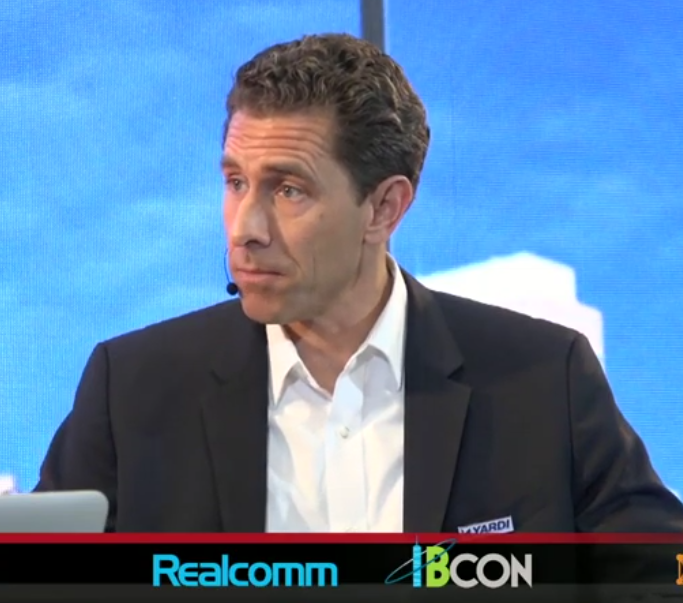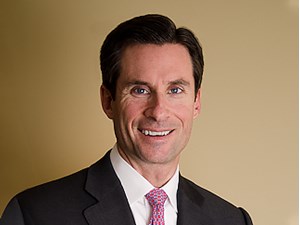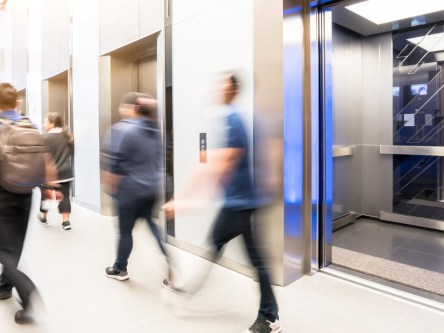Yardi contributed hugely to the success of the recent Realcomm ׀ IBCon conferences, an annual premier event in the commercial real estate industry, by showcasing innovative technologies that control revenue and expenses. Yardi focused on the benefits of Yardi Elevate, Yardi Kube and Yardi Pulse. These product suites blend business intelligence from Yardi Matrix with operational tools into a single connected platform that harmonizes leasing, deal management, tenant improvements, budgeting, construction management and other operations. Property owners can make better decisions, manage pipelines more efficiently and foster closer interaction between external brokers and asset managers. Rob Teel, Yardi senior vice president of global solutions noted in a live-streamed interview during Realcomm ׀ IBCon that property managers must manage revenue and expenses more actively than they did a decade ago to generate expected returns. “Success comes when teams work together to create an ecosystem of users who can collaborate to improve operational performance,” he said. Watch the full interview below: The solutions also give rise to new revenue streams from coworking membership arrangements, better forecasting capability, lower energy consumption and expenses without sacrificing occupant comfort, and budget and schedule certainty for construction projects. With their real-time connection to the Yardi Voyager property management and accounting database, they’re easier to use and more reliable than point solutions. “Yardi has extended solutions from the Yardi Voyager property management and accounting platform to encompass other elements, making property owners and managers more efficient,” Brian Sutherland, industry principal of global solutions, said in another live-streamed interview. Watch the full interview below: “Realcomm ׀ IBCon was a great opportunity for the Yardi team to connect with and learn from clients, vendors and other industry participants. The conference’s quality is second to none,” Teel said. Asked the secret of Yardi’s success, Sutherland said,...
AI, Examined
CRE's Machine Learning Future
Editor’s note: The following article by Kevin Yardi, vice president of consulting practices for Yardi, was originally printed as a Realcomm Advisory on May 31, 2019. It is reprinted here with permission. Various aspects of big data, AI and Machine Learning have been reported extensively in this space and elsewhere. I’ll use this opportunity to highlight some key points that I think are particularly important to helping the commercial real estate industry benefit from these capabilities. Just what are we talking about? “Big data” means large, complex data sets that most traditional software platforms can’t manage. AI refers to computer systems that can perform tasks normally requiring human intelligence. Machine learning, a form of AI that enables systems to “learn as they go” without being explicitly programmed, supports informed decision-making by assembling and analyzing property information more quickly and more accurately than other systems. The expansion of digital data availability, computing power and software enhancements, along with cheap storage, have made these options viable for commercial real estate. What are the commercial real estate benefits of AI and Machine Learning? AI and Machine Learning can give companies better-structured data that improves business performance. For example, AI systems can detect patterns in conditions affecting energy consumption without being requested, then optimize the target temperature every 30 seconds to ensure comfort without using more energy than necessary. They can also learn from past performance to react to changes in occupancy, weather and other factors. All this translates into better performance through lower utility, energy and equipment maintenance costs; increased tenant comfort that reduces service calls and increases retention; regulatory compliance; investor satisfaction; and higher ENERGY STAR® scores. In short, AI saves energy and money while creating more comfort than humans could do on their own. More...
Rents on the Rise
Office Market Update
A new national office property report from Yardi Matrix shows that asking rents rose by 1.1% in April 2019 over the previous three month period while robust absorption of new supply kept the vacancy rate unchanged at 13.7%. Office rents’ strength across the U.S. reflects “the continued health of the economy and the growth of the technology, health care and coworking segments,” according to the report. Nineteen of the 25 major markets covered in the report saw gains in asking rents over the past three months. Rent growth was strongest in markets with a healthy dose of “new economy” and technology tenants such as Austin, Texas, Brooklyn, N.Y., San Francisco and the surrounding Bay Area, along with Tampa, Fla., and Nashville, Tenn. Only Chicago and Seattle saw declines of more than 1%. About 14.4 million square feet of office space came online through April, with Class A space accounting for about 90% of the total. Properties under construction represent a 2.9% growth of total inventory. “While it is early in the year and we expect the pace of deliveries to step up later in the year, so far in 2019 suburban construction has outpaced that in central business districts compared to last year,” the report says. Asking rents stood at $36.40 per square foot nationally in April. The vacancy rate was unchanged at 13.7%. Office property transactions valued at $19.8 billion closed in the first four months of the year. Want more insight? View the full Yardi Matrix national office report for May...
Shifting Spaces
Office Market Update
While industry fundamentals are healthy and the economy is strong, the U.S. office sector faces pressures that could fundamentally alter its business model. Jeff Adler and Jack Kern, vice president and director of institutional research, respectively, for Yardi Matrix, provided an update on a sector in transition in a recent webinar. After a shaky fourth quarter of 2018, the U.S. economy has rebounded into “really good shape,” Adler said, with a rising stock market and inflation that is largely held in check by increased domestic oil production. The labor market is very tight—the best in 50 years, he said—with office-using sectors outpacing overall job and wage growth over the past five years and most markets absorbing available office space. Metros such as Dallas, Houston and Atlanta are growing fast and adding office-using jobs. Other locations with job growth and low unemployment, such as Orlando, Fla., Nashville, Tenn., San Francisco and the nearby Bay Area, have to import workers to meet staffing needs. Most markets still have room to absorb office space. In short, the industry is in a good place, and if the federal government’s pro-growth policies outweigh its anti-growth ones, “the party goes on,” Adler said. So what are the challenges? One of the main secular (long-term) factors is coworking, which pulls 1-3% of market demand from traditional office leases and keeps growing as companies expand beyond their primary locations. The practice is growing everywhere and won’t likely go away anytime soon, Adler said. Per-employee square footage is decreasing, particularly in central business districts and high-cost metros. With a tight labor market, companies are luring talent by making office “an experience-driven sector,” similar to what has happened in retail, incorporating design elements and attractions such as new technology, spaces for relaxation, natural light,...
Green Brings Green
Sustainability Aids Retention
Did you know that adding sustainable features to your property can improve tenant retention? It’s true! If you’ve been brainstorming ways to increase lease renewals and decrease overhead costs, green upgrades may be the answer. The Benefits of Sustainability Tenants look favorably upon earth conscious workspaces. DTZ, an international leader in commercial real estate services, analyzed responses to the 2015 Kingsley Associates’ tenant survey. Researchers discovered a strong correlation between sustainability and client satisfaction. Respondents expressed greater satisfaction with sites that offered environmentally conscious upgrades and services. Fortunately, there are several sustainable features that you can offer that also benefit you! Check out the suggestions below: Promote paperless services. Online services such as online rent payment, online maintenance requests, and online communication are easy ways to decrease deforestation and keep paper out of landfills. Clients will love that online services are quick, simple, and easy to track. You’re improving efficiency for staff while cutting costs on supplies, printing, and fewer late payments. Implement intelligent utility billing. Catching leaks, billing errors, and monitoring consumption through submetering are just a few benefits of energy management systems. Systems’ automated cost recovery programs can save thousands. Make ride share easier. The share economy is estimated to become a $335 billion industry by 2025. Show that you’re savvy to what clients want by promoting ride share at your property. Designate a few easily accessible spaces for ride share drivers. Shared rides decrease traffic congestion. Conduct an energy and resource audit. No one likes to be audited. Fortunately, this audit is a great way to shave overhead costs and gain points with occupants. Have a third-party conduct a water and energy audit of your property. Professionals can catch leaks and wasted resources to help you save money, and then pass...
CRE in Cincinnati
Adam Rath, Rath Equity
The office real estate sector shows strong fundamentals as it appears to be near a peak, shares Yardi client Adam Rath, founder & owner of Rath Equity. The company started operating in the Cincinnati area since last year and is now focused on growing its base of industrial and office clients. In a wide-ranging conversation, he touched on the trends, challenges and opportunities in the metro’s commercial real estate market. What is your general view of the office sector? What are the main trends? Rath: The major factor contributing to a strong office and industrial market in Cincinnati is a strong local economy and revitalized downtown that has aided in the ability to retain educated workers and have accelerated a strong economic growth. The unemployment rate has compressed to under 4 percent. The Cincinnati office sector is currently strong and healthy. In the last few years, we have seen rising rents and vacancies going down. Also, sales are strong but appear to be reaching a peak at both cap rates and price per square foot. Tell us about the challenges you see in today’s market. Rath: The major challenge we are faced with today is economic uncertainty in the next one to three years. We have seen record growth/investment over the last few years and debt limits starting to reach pre-recession levels. Most people in the industry are starting to feel a pullback. The majority of the investors I speak to feel a pullback is needed to bring pricing within limits to deploy capital. This economic uncertainty should provide an opportunity for investment. What are the trickiest aspects of being a medium-sized company? Rath: Rath Equity was created to be a boutique investor-friendly brokerage and built to be able to adapt and pivot as...
Industrial Markets
Trends Insight from Yardi client
Boosted by healthy economic fundamentals, the U.S. industrial real estate market maintained its historic growth throughout the first half of the year, according to the most recent Yardi Matrix industrial report. The sector continues to benefit from increases in online consumer spending. Traditional core industrial markets such as Chicago, New Jersey, Dallas-Fort Worth and the Inland Empire are still leading growth, but new areas of interest are emerging. Demand is stronger than ever, with more than 128 million square feet of space absorbed nationally in the first half of 2018. Yardi client Winstanley Enterprises is one of the largest owners and operators of warehouse and distribution space on the East Coast, according to a National Real Estate Investor survey. Founder & Principal Adam Winstanley has roughly three decades of experience in real estate acquisition, development, finance, construction, leasing, asset management and disposition. Winstanley shares insights into the East Coast’s industrial markets and touches on technology’s impact on the sector. He also talks about what causes distress among investors and reveals his plans for the next years. Which are the hottest industrial markets on the East Coast? Winstanley: The hottest industrial markets on the East Coast remain Exit 8A in New Jersey, Lehigh Valley in Pennsylvania and the current newcomer Connecticut—between Hartford and Springfield, Mass., on Interstate 91. What do you take into account when deciding your next investment location? Winstanley: We look for sites that have low site development costs, with quick access back to major interstates on primary distribution routes. This interview originally appeared in Commercial Property Executive, a Yardi publication. Read the rest of the conversation with Winstanley...
Sharing Disruption
U.S. Coworking Expands
Coworking isn’t new, but its recent growth and prominence in the U.S. office market space is. A new special report from Yardi Matrix, titled “Shared Space: Disrupting the Traditional Office,” outlines the dramatic increase in shared spaces over the past year, driven by a growing “gig economy” and employers’ desire to deploy more workers remotely, attract talent and gain more flexibility for their space. In researching 20 metros, Yardi Matrix found that 43.5 million square feet of office space was being rented as of the fourth quarter of 2018. This represented a 62% increase in shared space over the previous year and 1.7% of the total inventory. The business model for shared space is evolving to match the practice’s growth, with landlords and brokerage firms offering more amenities and flexible lease arrangements. Coworking has gained footholds in both urban markets (2.2% of stock) and suburban submarkets (1.2%). The practice is “growing as a percentage of office stock in all areas, but it is a more natural fit in urban settings due to the proximity to a greater number of workers, easier commute to urban locations and greater availability of small rental spaces in suburban areas,” the report says. “The sector is in a nascent phase, so the pace of growth is likely to pick up in coming years.” Manhattan, N.Y., ranked first in both overall amount of shared space with 13.7 million square feet, with Los Angeles second with 4.7 million square feet. The borough also had the most shared space as a percentage of total stock, 3%, with Portland, Ore., Miami, San Francisco and Austin, Texas, totaling 2.5%, 2.4%, 2.3% and 2.2%, respectively. Read the full Yardi Matrix special...
Industrial Strength
Matrix Market Report
Yardi Matrix took a close look at the U.S. industrial real estate market’s performance in the first half of 2018 and found plenty of positive signs. Indications of the sector’s strength include: Strong demand for space driven by year-over-year e-commerce sales growth of 15.4% Nearly 125 million square feet of industrial space coming online 7% year-over-year rent growth A national vacancy rate below 5% in the first quarter, the lowest since 2010 Commercial real estate-leading investment volume “Demand is stronger than ever” in every industrial subsector, the report says, with warehousing, manufacturing and flex space accounting for most of the occupancy gains. Demand was strongest in California’s Inland Empire, followed by Chicago and New Jersey. The industrial sector continued to benefit from rising e-commerce sales, which totaled $120.4 billion in the second quarter alone and drove the need for distribution centers near dense population areas. Over 90% of the first half’s new supply was warehouse and distribution space, with more than 238 million square feet of additional space under construction at mid-year. In markets where available land for development is scarce, developers focused on renovation and site remediation projects, expecting to recover costs with higher rents. Industrial rents continued to increase in most markets, spurred by the exceptional demand and lack of excess space in the top logistics markets. Rents averaged $6.29 per square foot at mid-year, up 7% year-over-year. “Expect rents to further increase through 2018 as the quality of available inventory improves due to upgrades and addition of new space,” the report says, noting that a slight deceleration might follow in 2019 as projects now under construction add to available inventory. The national industrial vacancy rate, 4.9% in the first quarter, was largely due to companies snapping up space before it was...
5 Easy Tips
For Better Property Photos
Commercial property photos are notoriously unimaginative. Prospects have grown accustomed to mundane shots of empty spaces. But what if you offered something more interesting? Your property will gain the competitive advantage. Below are five tips for better commercial property photography that will help you stand apart from the crowd. Show Interactions, Not Spaces All commercial spaces have a ceiling, walls, and a floor. Skip the boring space photos. Instead, showcase interactions and operations within the space. Here are a few examples: Accentuate the room’s natural light by depicting an employee as she waters thriving, indoor plants near large windows Capture a team effortlessly unloading packages on the spacious and updated loading dock Emphasize your rapid WiFi availability with teams working simultaneously on their laptops and mobile devices Highlight your services by showing a vendor removing a recycling bin from the site Stage Like Sales Depend on It! As you’ve gathered by now, staging a commercial space may require models and supplies. It could be worthwhile to invest in office furniture so that you can stage spaces now and in the future. Otherwise, you can find models, photographers, and props on sites like MuseCube, Model Mayhem, and OneSource Talent. Commercial tenants want to see the potential of the space that you offer. If live staging is cost prohibitive, consider virtual staging. Virtual “renovations” are a great way to show potential uses for the space. Showcase Versatility Think beyond expected uses of the unit. Consider creative approaches for the space, such as coworking and CrossFit. By thinking outside of the box, you may attract a prospect that had not previously considered your site. Location, Location, Location Your property’s neighborhood may be a noteworthy part of your marketing efforts. Are there restaurants nearby that tenants may enjoy...
Office Update
From Yardi Matrix
A strong U.S. economy has given rise to an equally robust office real estate market. Office-using employment and wage gains outpace the national average growth rate, according to a recent report from Jeff Adler and Jack Kern, vice president and director of research, respectively, for Yardi Matrix. Their update, presented in a webinar, focused on the macroeconomic outlook, national office fundamentals and trends, and technology disruptors. Employment, gross domestic product, household formation and income levels are in good shape, supporting growth in the office market segment. More than half of the 115 major markets surveyed by Yardi Matrix are experiencing moderate rent growth. Intellectual capital—companies and workers—are leaving high-cost gateway markets such as New York, San Francisco and Los Angeles for lower living and business costs. Job growth is highest in emerging tech hub markets such as Reno, Nev., Boise, Idaho, Nashville, Tenn., and Orlando, Fla. An aging population is fueling growth in the medical office sector, especially in Sun Belt locations. “Most markets remain undersupplied because supply isn’t keeping up with demand,” Adler said. High levels of pre-leasing activities indicates continued strong demand and likely swift absorption of new supply, especially in tech hub market hubs such as Austin, Texas, Raleigh-Durham, N.C., and Orlando. Other pressures on the office market include a decreasing amount of square footage per employee, which is especially pronounced in central business districts and high-cost metros. In addition, coworking is growing, especially in dense, high-cost gateway markets, diverting 1-3% of office demand from traditional office leases. Coworking could eventually represent 10% of available space, Adler said, with Yardi a leader in providing the infrastructure and technology for coworking and shared space environments. Technology trends likely to change the nature of work and create wealth in office real estate include...
Coworking Takes Off
Asia market update
The global wholesale leasing model is under pressure, as technology-enabled coworking gains both momentum and market share, says Neal Gemassmer, vice president of international sales for Yardi. Shared workspace is not new – but advancing technology, the growing gig economy and cost-cutting strategies are driving the coworking trend into the mainstream. Increasingly, corporations are turning to coworking to accommodate remote employees, attract talent, promote work satisfaction and reduce leasing costs. “Technology-enabled coworking is undoubtedly putting pressure on traditional leasing models,” Gemassmer says. “Developers of A Grade office buildings have traditionally acted as wholesalers of whole or half floors of space to occupiers who must make long-term leasing commitments, and then fit out their own offices. “But technology-enabled coworking operators are using online marketing and leasing systems to efficiently offer office space to tenants at competitive rates. This is beginning to encroach on the territory of office developers. “Changes to technology does more than change behaviour. It changes the environment itself.” Gemassmer points to a recent report from Asian market intelligence source Mingtiandi, developed in partnership with Yardi, which found the growth rate of coworking in Asia had hit 40 percent in 2017. Starting as a single coworking space in New York in 2010, WeWork is one lease away from being the biggest landlord in the Big Apple. With 280-plus locations in 20 countries, WeWork is rolling out roughly 185,000 sqm of new office space every month. Around a quarter of WeWork’s clients are enterprises with more than 1,000 employees. WeWork only launched the enterprise service in 2016, and has since amassed an impressive list of clients including Facebook, Airbnb, Microsoft, Adidas, Amazon, Starbucks and LinkedIn. WeWork is just one of several coworking companies taking the region by storm, but it is the biggest. In...
Asset Tech Upgrades
Insight from Todd Huebsch
Until fairly recently, enterprise software platforms for real estate largely focused on accounting, finance and other back office operations. The advanced programming languages, mobile reach and internet capacity that enable automated workflows and remote access available for the back office hadn’t reached the front office. Things are different today—for the better. In an article originally published in Journal of Property Management, Todd Huebsch, Yardi vice president of commercial sales, explains why. New software applications squarely target the front office, lending new dynamism to leasing, customer services, facility management, development and other operations. What does the evolution of technology dedicated to the front office mean in practical terms? For one, it means that property management technology has reached the point where remote access is both affordable and effective for managers involved in leasing, construction and facilities management. It also means leasing and asset management can work a deal together with a previously unattainable degree of collaboration. Development vice presidents can evaluate risk with instant access to project status, instead of waiting for a weekly report. They can leverage ERP data such as lease comps, revenue trends, contractor and job analysis, to make better decisions. Consider, for example, construction managers working to correct a problem with a building’s foundation. In an earlier era, they would call or email the back office, or even leave the site altogether to calculate the change order and negotiate the amount and cost code. Today, using apps designed specifically for their role, construction managers can enter the work order with just a few taps on a mobile device. The change order automatically flows to the back office and is recorded in the core property management and accounting platform. The adjustment is fully visible to all parties and the construction manager...
People Flow
Managing Foot Traffic
Developers, property owners and architects have a new tool available for building design. The Virtual Building Service, an innovation from Budapest-headquartered EIT Digital, creates digital simulations to test and optimize people flow and building occupancy. IBM and KONE, a company that specializes in the elevator and escalator industry, have partnered in the initiative, with KONE acting as business owner and activity leader. The service is designed to make it easier for real estate professionals to design buildings that are financially attractive, while maximizing shared spaces. Simulation data will be collected in real time by sensors, while new facilities will have to rely on input from previous studies. “Our simulation capability is much improved. We can, for example, simulate people flow in the lobby of an office building; understand how that might look along with the waiting times for the elevators,” said KONE’s head of People Flow Optimization Juha-Matti Kuusinen. “Not only can we calculate a building’s efficiency, but we can also benchmark it with similar buildings and conclude if the building is performing very well or if there’s room for improvement.” KONE had focused its efforts on vertical efficiency, such as people moving from floor to floor. In tall buildings, elevator group control systems select which elevator to dispatch to each request, aiming to minimize waiting times. These systems could be upgraded by forecasting future traffic based on historical statistics. “We realized, however, that if you don’t design end-to-end people flow, including the horizontal people flow, it is difficult for our customers to judge whether their buildings are really efficient. This is why we started to explore the optimization of the total people flow, combining both the horizontal and vertical dimensions,” added Kuusinen. Tarmo Kekki, executive partner at IBM, said the simulator is a...
Yardi Elevate
Sutherland Talks Tech
A group of real estate industry thought leaders, including Yardi’s Brian Sutherland, exchanged thoughts on emerging real estate technologies in a recent Realcomm-hosted webinar. With the “explosion” of solutions to choose from, “it’s challenging to know which one will help operationally, increase the bottom line, reduce costs and serve customers,” said Sutherland, industry principal for Yardi Elevate. Some of them, such as coworking, didn’t exist only a few years ago. While buyers benefit from a number of innovative options, he noted, rapid obsolescence and change management challenges present potential pitfalls. Sutherland also addressed technology innovations that support facility and construction managers, leasing agents and property-level users in new and meaningful ways. “They want a solution that’s designed for them and which connects them to the central data system with mobile applications and dashboards. That’s why we created a connected ecosystem for the operations side [with Yardi Elevate},” he said. Expanding data access to the back office is tied to the larger issue of data management, Sutherland said. “The challenge is dissecting data and making it actionable for informed decisions. That’s the importance of role-based dashboards that remove guesswork for building operations people who need to control costs and work more efficiently.” Other participants in the webinar included Chip Pierpont, director of innovation, performance and technologies for the U.S. General Services Administration, which manages property for the federal government. GSA sees energy consumption analytics as a “pristine opportunity to engage in a new way to operate” to meet federal government energy reduction targets,” Pierpont said. GSA continues to seek ways to use energy analytics, retrofit equipment and incorporate additional sensing capabilities in its buildings. Pierpont also emphasized the importance of managing data, not just collecting it: “No matter how much data you have, if it’s...
Pace Setters
Realcomm Tech Forecast
Appropriately for the “acceleration” theme of its global conference this week, Realcomm recently hosted a webinar in which several experts, including Yardi’s Alex Stanton, commented on the rapid pace of change in commercial real estate and new data management technology entering the marketplace. Stanton, regional director of commercial sales, said the movement toward an integrated concept of information management is so profound that it’s altering the very concept of the lease. “Client,” for example, no longer means a single entity but instead a broader category of people to be managed with increasingly granular information. “Space” encompasses coworking, parking and amenities as well as traditional offices. “Tenants” are morphing into “guests” whose service expectations require the collection and management of an expanding body of information including such non-real estate sources as weather and traffic information. Companies are creating digital twins of everything from their buildings to their tenants and the environment surrounding them. The best prescription for managing change, he said, is aligning IT resources with a company’s strategic direction. “When there’s a nice marriage of business and IT, there’s stronger direction and execution on investments, efficiencies and other actions,” Stanton said. Other participants and their thoughts on managing change included: Sam Wong, head of analytics and data science for global real estate manager QuadReal Property Group. When building its data platform from scratch, QuadReal focused on gaining insight and action, not just reporting, and its attention to the information management and database portions of the solution stack equaled that devoted to business intelligence and analytics. “We also sought a platform that could grow in capability and size so we don’t just worry about what we need to do in the next year or so,” said Wong, who managed both the business and technical teams...
CRE Tech
Boom or Bust? Experts Weigh In
“CRE Tech Industry—Boom or Bust?” was the question posed in a recent Realcomm-hosted webinar. The answer will depend on technology providers’ ability to differentiate themselves and deliver solutions that create value for building owners and operators, according to a panel of real estate technology suppliers, investors and users including Yardi’s Alex Stanton. The five webinar panelists agreed that the commercial real estate industry historically has been slow to innovate its asset management technology. In recent years, however, competitive, regulatory and sustainability pressures have generated a sense of urgency among property owners and managers to regard technology as a strategic ally. Stanton, Yardi’s regional director for commercial sales, noted that generic enterprise management platforms have evolved to accommodate procurement, energy management, coworking and marketing, paralleling the morphing of “lease” from basic tenancy to include amenities and online self-service options. “As a provider of transaction-enabling technology, Yardi aims to create deep transactional functions that can be embedded into the core technology platform,” he said. John Gilbert, chief operating officer and executive vice president of New York City property owner and manager Rudin Management, said his company invests in technology startups and even spun off its own software company. He likened technology to a construction project: “When building a structure, we dig a hole and pour a foundation. Property owners should look at technology adoption exactly the same way. I don’t want 20 more silos with 20 new technologies. All data collected should go into a central, integrated platform that can make the building run more efficiently and be smarter.” This approach will “future-proof” buildings and create value by correlating data that’s already being collected. Will O’Donnell, a senior vice president at logistics real estate leader Prologis Inc., noted that the difficulty of adopting new technology can...
Digital Definition
Transformative CRE Tech
What does “digital transformation” mean to commercial property management beyond a catchphrase? Six thought leaders including Alex Stanton, Yardi’s commercial industry principal, provided clarity on the subject in a recent Realcomm-hosted webinar. Digital transformation extends technology beyond acquiring and managing property. It’s driven by business factors such as profitability, occupant satisfaction and productivity along with new technologies including the cloud, data analytics and the Internet of Things. Digital transformation is “a strategy lever to achieve broader business agendas and create new levels of value,” according to panelist Marc Petock, chief communications officer and vice president of marketing for IoT technology builder Lynxspring. Digital transformation aggregates business, operations and IT practices into a common platform for people, processes, best practices and services, Petock said, with new technology embraced not for its own sake but to change thought and organizational culture. Executed properly, digital transformation can foster better resource planning, empowerment, technology collaboration and risk mitigation. With heating, ventilation and air conditioning equipment comprising a major expense, for example, commercial building owners and operators are incentivized to adopt intelligent building technology that provides new insight into operations and equipment performance. Commercial real estate has traditionally been slow to adopt transformative technology; when the panelists were asked how much of the industry understands digital transformation, no estimate exceeded 30 percent. But that’s changing in the face of pressures for profits, high sustainability expectations and consumers’ technology sophistication. “Technology used to mean ‘support’; now it’s at the forefront of driving revenue and services,” said Sandy Jacolow, chief information officer for real estate developer, investor and manager Silverstein Properties. “It has shifted how we do business. For example, mobile capability is no longer a luxury; tenants say ‘Is there an app for that?’ A poor interface or customer experience...
Tech Evolution
New Truths for CRE
Alex Stanton, Yardi industry principal for Commercial, joined other technology experts in exploring the fast-paced evolution of technology, automation and innovation in a recent Realcomm-sponsored webinar. The six-member panel described the current real estate technology paradigm that considers tenants, guests, employees and shoppers as interrelated elements of a user experience. As a result, property owners and managers aim to deliver a high-value experience by using new property management software systems that can capture and apply data inclusive of all occupant touchpoints, from reservations to parking to the building environment. Stanton elaborated on this theme, noting the convergence of historically separated property management technologies for property and facilities maintenance, energy management, procurement and self-service experiences. Amid rising expectations of among space and asset users, he said, “facility, property and business management systems are coming together,” allowing inventory management, preventative maintenance and exceptions management from a core suite. Additional technology innovations include “interfaces that enable experiences, such as service requests, photo-enabled technology for notifications, concierge services and payments, with immediate download of supporting photographs,” he said, adding, “Yardi sees tremendous opportunity in artificial intelligence, the internet of things and visualization.” Addressing another part of creating an optimal building experience, Stanton referenced Yardi’s creation of an energy suite that encompasses everything from energy optimization, sourcing, utility expense management and compliance. Other speakers addressed other drivers of real estate technology innovation. Rick Gehringer from real estate developer Caruso related how a common technology platform can provide “a true experience management system” for guests by capturing all touchpoints and every user engagement across a property. Examples of how technology can make the guest experience enjoyable, efficient and high-quality include a common reservation system, a rewards system that captures receipt images and an automated parking system. John Gilbert of commercial...
CRE Tech Trends
Teel Talks at Realcomm
Rob Teel, senior vice president of global solutions for Yardi, offered perspective on new tools that help commercial real estate companies gather, analyze and use data in new ways in an interview at the Realcomm conference in San Diego. Guided by collaboration with clients and industry trends, Yardi is directing its product development beyond traditional accounting and back office systems. “Most transactions, such as purchase orders by employees and work orders by tenants, start in the field and usually on a mobile platform. We want to continue pushing ERP upstream to the source of transactions, and capture data that goes to the general ledger from the first transaction,” Teel explained. He cited COMMERCIALCafé Tenant, a downloadable app that extends online services to mobile devices, as an example of this effort. VENDORCafé, which automates manual processing involved in validating and onboarding vendors, also offers secure, mobile access to the ERP. Teel also mentioned the investments Yardi has made, through acquisitions and development, to develop a comprehensive energy offering that includes intelligent HVAC optimization, submeter-level usage analysis and fault detection. With these capabilities in hand, Yardi now focuses on putting them together as “a holistic offering that helps clients reduce their energy spend and promote sustainability,” he said. He also discussed Yardi Matrix in terms of the artificial intelligence and guided analytics trends that were popular topics of discussion at Realcomm. For years Yardi Matrix has been gathering information on commercial, multifamily and self storage facilities across the U.S. The challenge now, Teel said, is to “use that repository of information about leases, rental rates and other characteristics to help clients make smart decisions about pricing properties, forecasting budgets and reporting to analysts and stakeholders,” Teel said. Extending Yardi Matrix beyond data capture and leveraging the...
Cloud Clarity
CRE Data Trends
A group of real estate technology experts—including Alex Stanton, Yardi industry principal for commercial—took stock of cloud computing’s growing role in real estate in a recent Realcomm-sponsored webinar, “The Latest Trends in the CRE Cloud.” With about 80% of companies running some portion of their workloads in public or private clouds, the panel explored the new opportunities this dynamic environment presents real estate companies as well as potential pitfalls. Emphasis on security Stanton focused on the challenge of safeguarding the massive amount of information involved in cloud-based commercial asset management. “Sources of real estate data are ever-expanding, and more public and private information is available as the Internet of Things takes hold,” he said. Commercial real estate is now edging into the “Big Data” phase with transactional data being married with content including photos/videos, satellite imagery, weather data and building performance systems. While the collection points for this information can optimize business and site efficiency, they also present more potential points of entry for security threats. As a result, he said, “the bar is continuously being set higher for security.” Yardi and other solution providers create vulnerability management protocols and multiple levels of data center and application security. Real estate companies, meanwhile, must educate their employees on protecting the information they access with business applications on remote devices and other means. “We continue to see the acceleration of technology adoption in the commercial real estate space. It will be an exciting journey, but from a data governance standpoint we need to constantly adapt and identify the solutions that will connect them in an ever-evolving environment,” Stanton said. IT’s new perspective Another panelist was Bob Rybak, chief information officer for Morguard, whose portfolio includes 44 million square feet of commercial space and adopted 100% cloud...
CRE Tech 5.0
Guest Blog by Jim Young
Editor’s note: Jim Young is the Founder and CEO of Realcomm. At a recent Yardi Executive Briefing, he spoke about CRE 5.0. In this guest blog post, he further expands on the subject. The commercial and corporate real estate industry has many moving parts. Change is the only constant as companies around the world continually add and subtract from their organizations and portfolios. A merger today and a disposition tomorrow requires a complex network of individuals and processes to keep up with the changing real estate needs of a company. The people and processes involved in keeping a real estate portfolio moving smoothly require a significant amount of technology, automation and innovation. It is no longer possible to keep asset, lease, utilization, energy, operations and other data in spreadsheets or other disconnected information silos. In addition, there are four primary categories of technology associated with commercial and corporate real estate, 1) Real Estate Operational Information; 2) Transactions; 3) Smart, Connected, High-Performance Buildings; and 4) Next Generation Space. Over the course of the last 30 years, there have been five major phases of automation that have impacted the commercial and corporate real estate industry. Following is an overview of this CRE Tech evolution: CRE Tech 1.0 started over 25 years ago. Companies like Manhattan, Tririga, Yardi, MRI, CTI, J.D. Edwards, Argus, Angus and others, were the first to enter the real estate technology space. Their primary functionality was targeted on lease administration, asset management, accounting and property management. CoStar, which was founded in 1987, emerged as an industry giant, although the company has focused more on transactional and market data. Comps Inc., another market data company (acquired by CoStar), was also an early pioneer as were DataQuick, Damar, MetroScan and others. On the smart building...
Insights on Innovation
Jim Young and Kevin Yardi
In 1992, the founder and CEO of Realcomm made a prediction. Jim Young wrote an article entitled “The Information Age and the Potential Effects on the Commercial Real Estate Market” forecasting a world in which reporters armed with “personal communicator” devices would relay information to editors, who pass it through an electronic distribution system to reach consumers in their home. As you read this on your smartphone, take a second to remember that Young made that prediction more than twenty years ago. Young describes that period as “Phase 1” of commercial real estate technology (CRE tech). It was a time of growing software implementation, marked by Windows-based property management software and the early days of building automation. Today, we’re entering Phase 5 of CRE tech, a realm of artificial intelligence (AI), blockchain and augmented reality. How did we get from there to here? Did the real estate industry successfully make the jump? And what the heck is blockchain? To answer those questions and more, I caught up with Jim Young and Kevin Yardi. Both recently spoke at the Yardi Executive Briefing, an invitation-only gathering for clients. Yardi opened his talk about the future of CRE tech by citing Young’s paper and the early days of Yardi Systems. As Yardi put it, “To look five or ten years forward, you get some context by first looking 30 years back.” Bridging the Tech Gap Thirty years ago, Yardi was founded as the tech world transitioned from mainframes to personal computers. These days, the majority of Yardi clients use Voyager 7S or Genesis2, hosted on the Yardi Cloud and accessed from a PC, laptop, tablet or smartphone. There’s an often mentioned belief that the real estate industry has lagged when it comes to technology adoption. While early adopters and visionaries quickly implement the latest and greatest tech, others prefer to take their time. “Tech is a short-term, high-speed industry,” says Young. “In real estate, it’s long-term everything. Last year the tech industry was going 100mph and real estate was at 30mph. With all this new stuff coming out of Silicon Valley, tech is about to go 200mph, and we need to bridge that gap.” Yardi echoes this sentiment. “When you’ve had an industry that’s been historically profitable by taking things slow and easy, why rock the boat?” However, he characterized most Yardi clients as early adopters. It’s those early adopters and thoughtful risk-takers who will have an edge in the years to come. Both Yardi and Young agree that more change is coming from all directions. Making Smarter Connections When it comes to technology, progress emerges from a combination of consumer demand and industry innovation, which introduces tools we didn’t know we couldn’t live without. Case in point: the smartphone. Who’d have guessed, back in 1992, that we’d soon be running our businesses and our daily lives on them? When technology catches on quickly for consumers, it creates a demand that ripples into our industry. With smartphones in our pockets we have the ability to shop, pay bills, conduct research and communicate online. We start to want these conveniences in the workplace. In real estate, that affects how we interact with real properties in a multitude of roles, whether we are tenants, property owners, or asset managers. If a CRE tenant is used to paying rent and browsing for home furnishings online, why wouldn’t he also expect to request maintenance, buy printer ink and pay the lease online? “We’re thinking now in terms of connected communities,” says Yardi. “Our clients are changing from just being the owners and managers of the properties, to encompass the tenants, brokers, leasing agents… it’s an entire ecosystem whose framework is based on cloud computing and mobile access.” Young stresses that the Millennials will be the leaders of the new business world, and their preferences will dictate how buildings are configured and managed. This is a cohort...
Tech and CRE
Bringing Change to the Commercial Sector
Technology is destined to change the way the commercial real estate market operates, but a debate is raging as to how and how much. Will it create a sea change in the industry, or will the impact be less than transformational? Certainly, technology has revolutionized the daily lives of most people—including the way they communicate, work, shop, eat and entertain. Yet some industry analysts contend that technological change has been slow to take root, and commercial real estate generally operates as it always has. In some sense, this is true. Commercial landlords lease the same basic property types, buy and sell based on cash flow projections, and take out mortgages. Ownership is concentrated in the hands of private companies, which tend to be zealous in guarding proprietary information. Also relatively undisturbed are the metrics by which real estate is measured: occupancy and demand levels, price per square foot and so on. Yet in other senses, there has been a transformation in an industry in which analysis was once performed on napkins and deals completed at country clubs. While the sector may still only be scratching the surface of its potential use of technology, there have been massive improvements in the availability of data used for underwriting. In software, that helps property owners manage assets more efficiently. In technology, that enhances access to investors. Using Real Estate Underlying the story of technology in real estate is the evolution in the way it impacts demand. For example, the amount of office space used per employee has continually shrunk over the past couple of decades, due to factors such as more efficient floor plans and technology that enables more people to work from home. The growth of WeWork space meets the needs of the current generation of workers, who are looking for flexible lease arrangements and a relaxed environment. The story of how Internet shopping has changed retail is well known. The U.S. has more retail space per person than any other country, and shopping center owners have had to revamp their focus from shopping to creating an experience and complementing online brands. Changes in retail are providing a boost to industrial real estate. Amazon and the largest brick-and-mortar retailers (such as Walmart and Target) that have large Internet presences are occupying and building tens of millions of square feet of warehouse space from which they can deliver quickly to highly populated areas. Airbnb is slowly becoming a strong competitor for the hotel industry just as hotel construction is recovering from the dip caused by the last recession. In multifamily, rather than building cookie-cutter units, apartment owners are being forced to consider amenities like co-working space, common areas for social activities and high-speed Internet access. Even Uber, which isn’t in a business related to real estate, will eventually have an impact on demand for commercial space. As fewer people drive, office buildings will need less parking, and companies will continue to retrench in urban areas close to public transportation and mass housing. Drilling down further, there are several broad areas in which technology is developing in commercial real estate: transactional underwriting, property management and broadening the investor base. Let’s look at these issues. Improved Transactional Underwriting The most obvious way technology has advanced in commercial real estate is in the collection and dissemination of information. Both at the property and market level, information was hard to come by years ago, but it is increasingly more available from both mainstream providers and new technology. Services that provide data have been around for decades, but in recent years companies (such as Yardi Matrix) have made huge strides in both the amount of information they gather and the way it is disseminated. More sophisticated software enables subscribers to customize and map information in ways that go well beyond what was available in the past, allowing them to delineate submarkets and correlate real estate performance with...
























